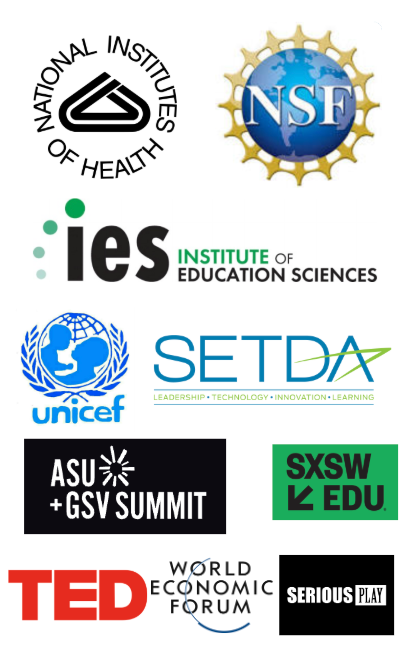Partners
Since 2016, Killer Snails has partnered with a number of esteemed organizations to create educational content. A partial list of organizations is included below- please reach out to info@killersnails.com if you're interested in collaborating!
Summary (Buy here!):
In WaterWays, students are Chimhe City scientists actively investigating interconnected problems like plastic pollution, air and water quality, Urban Heat Island effect, and marine biodiversity. Students move through immersive, interactive activities focused on water use and water stewardship to identify actions that they and neighborhood communities can take to improve human and environmental health. Five diverse modules that explore a specific theme offer a diverse range of learning experiences. Each module includes a call to action, gathering data, answering questions, constructing models and developing and testing hypotheses. WaterWays extends students’ knowledge about how water connects people and the environment, and applies that knowledge to cultivate a generation of informed, passionate students committed to preserving our planet's health.
WaterWays was developed in partnership with the Wildlife Conservation Society, Hudson River Park, and the Mount Sinai Transdisciplinary Center on Early Environmental Exposures. The experience is funded by the National Institute of Health and aligned to the Next Generation Science Standards.
Sharks & Plastic (Buy here!):

Students view a shark vomiting plastic trash, and then tag and track their own shark while making observations, collecting data, and making hypotheses about its movement as it intersects with potential plastic pollution that travels through the storm drains and outfalls of coastal cities, connecting local ecosystems.
Water's Journey (Buy here!):

Students view plastic waste found on the shore.They learn about the sewer systems that bring water into and out of homes. Three solutions – preventing littering, adding green spaces to soak up rainwater, and conserving water – are used to reduce negative impacts of combined sewer overflows in a model city.
Restoring Ecosystem (Buy here!):

Students view a set of ecological problems at Wavy Bay. The oyster reefs have disappeared, there are fewer seals, and the office near the shore has flooded. Students learn about and hypothesize how oyster reefs improve water quality, increase biodiversity, and reduce flooding.
Nature-Based Solutions (Buy here!):

Students view community members sharing problems in their neighborhood related to heat, air pollution, and flooding. Students learn about seven solutions to these problems, including how trees cool an area by providing shade and releasing water vapor, help prevent flooding by allowing water to be absorbed into the soil, and how particles stick to leaves which lowers air pollution.
Evaluating Progress (Buy here!):

Students look back at the changes in Chimhe City and prepare a presentation to share their work with other scientists. Students use data to make comparisons and evaluate how changes in the city have affected human and environmental health. The module concludes with students each creating a poster about one specific problem and solution to demonstrate their understanding of how water connects people and nature.
WaterWays was funded by the National Institute of General Medical Sciences of the National Institutes of Health under award number 1R44GM139577


